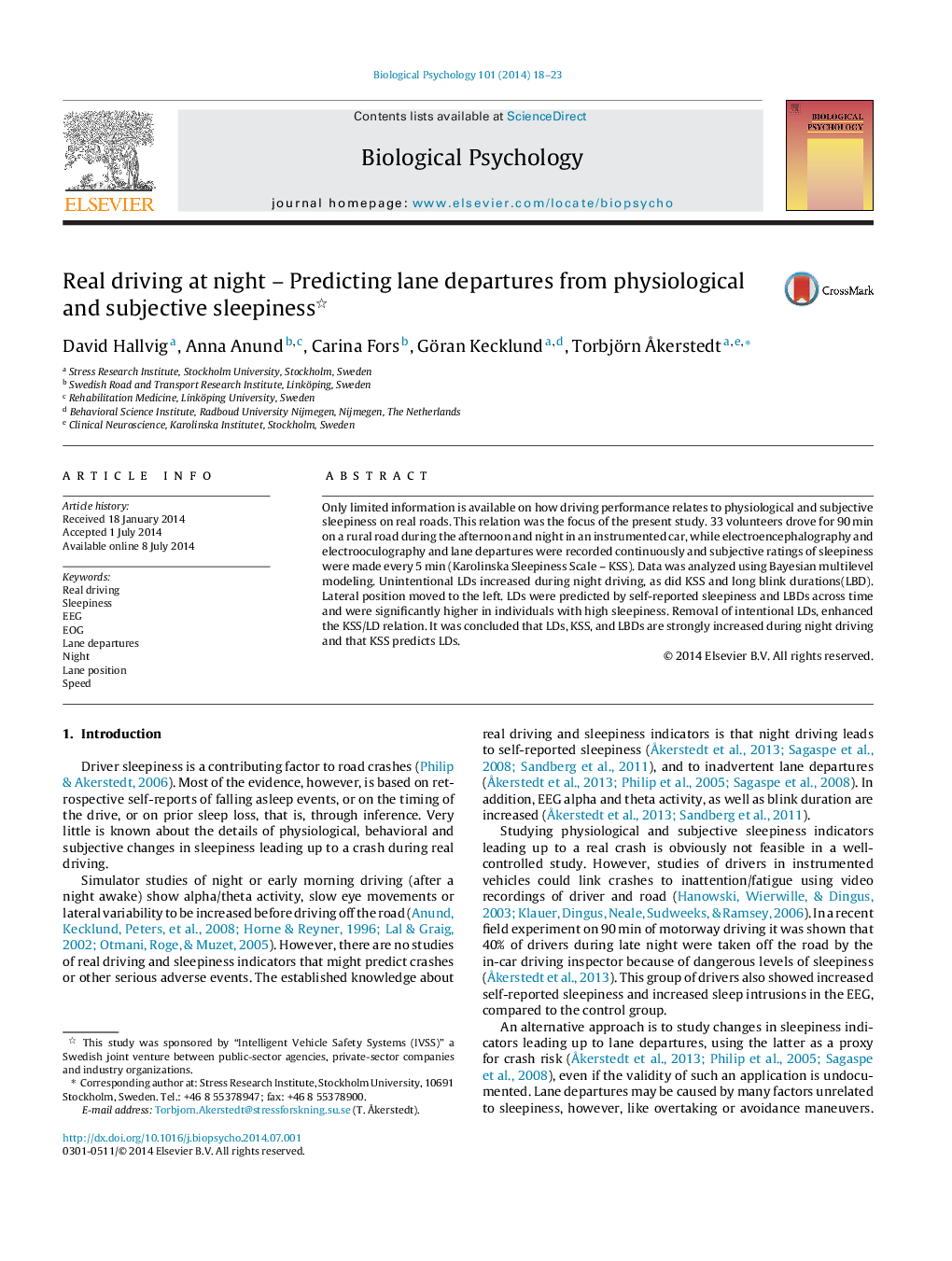| Article ID | Journal | Published Year | Pages | File Type |
|---|---|---|---|---|
| 920886 | Biological Psychology | 2014 | 6 Pages |
•Subjective sleepiness predicts lane deviations during real driving.•The high sleepiness group shows more lane departures than the low sleepiness group.•EEG measures were not related to lane departures.•Night driving showed more lane excursions, higher subjective sleepiness, and longer blink durations than day driving.•Lane departures in sleepiness research need to be screened to remove influences of overtaking, and interference from other vehicles, but especially from curve sections of the road (which induce short-cutting behavior).
Only limited information is available on how driving performance relates to physiological and subjective sleepiness on real roads. This relation was the focus of the present study. 33 volunteers drove for 90 min on a rural road during the afternoon and night in an instrumented car, while electroencephalography and electrooculography and lane departures were recorded continuously and subjective ratings of sleepiness were made every 5 min (Karolinska Sleepiness Scale – KSS). Data was analyzed using Bayesian multilevel modeling. Unintentional LDs increased during night driving, as did KSS and long blink durations(LBD). Lateral position moved to the left . LDs were predicted by self-reported sleepiness and LBDs across time and were significantly higher in individuals with high sleepiness. Removal of intentional LDs, enhanced the KSS/LD relation. It was concluded that LDs, KSS, and LBDs are strongly increased during night driving and that KSS predicts LDs.
